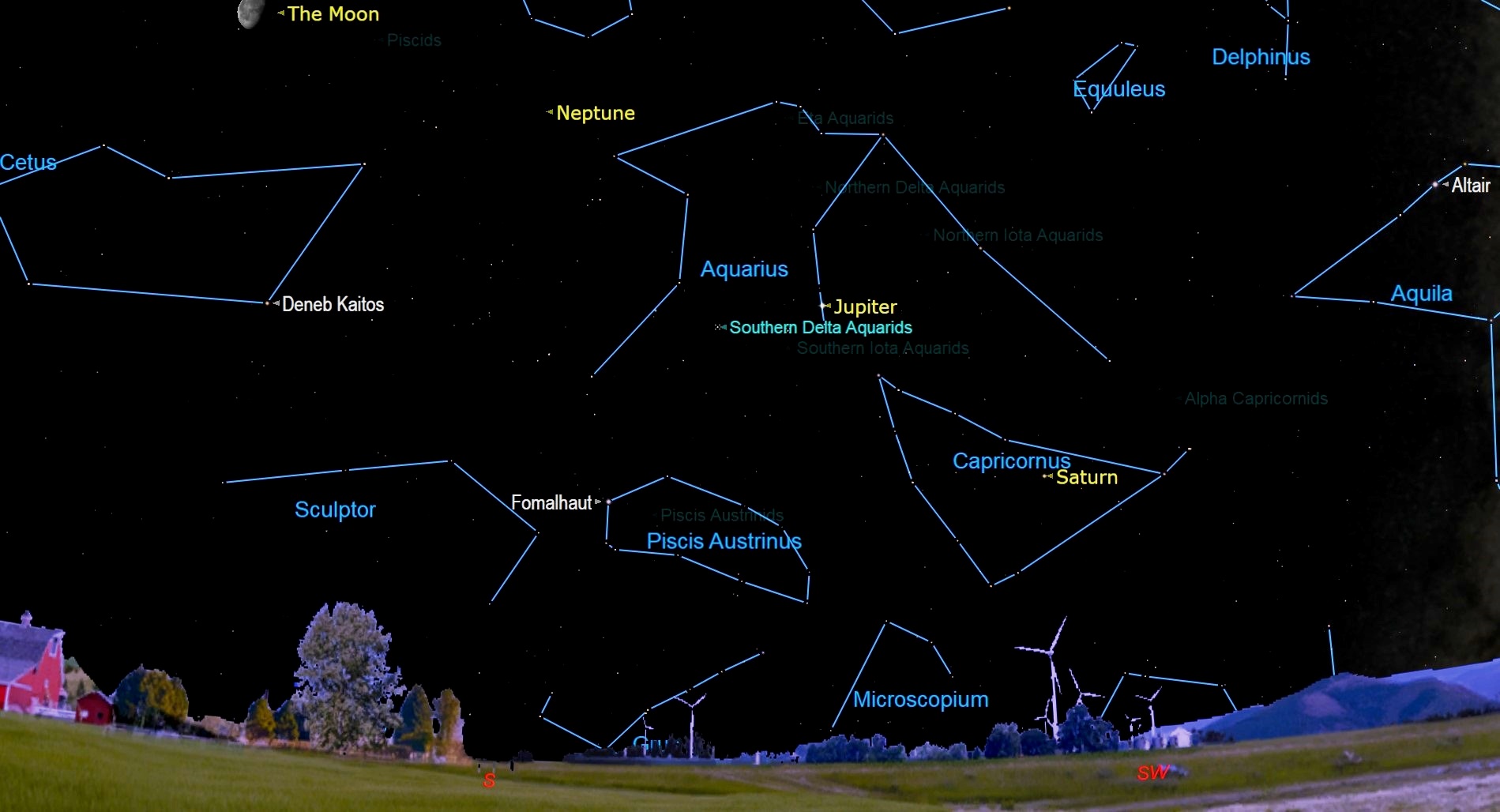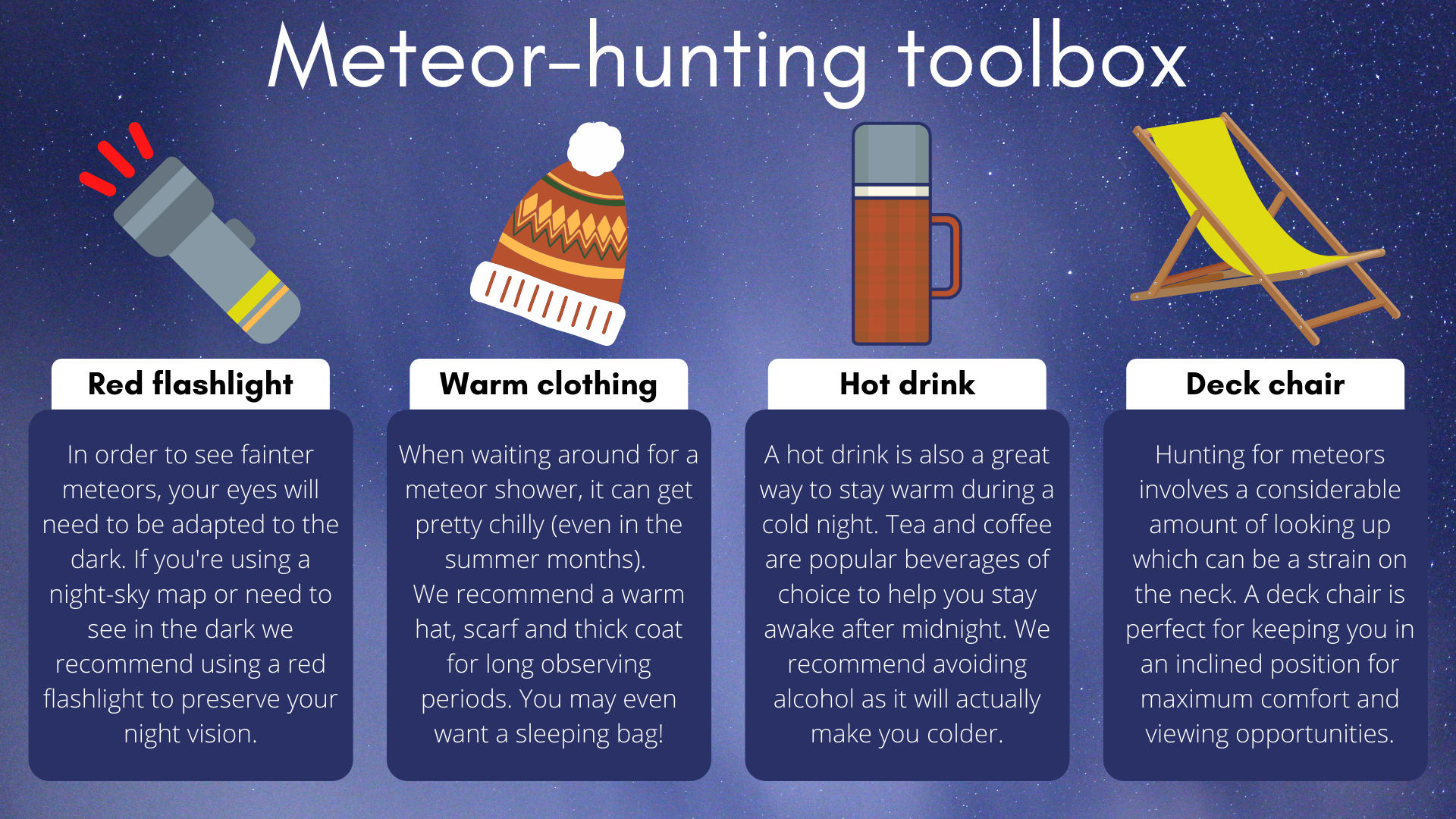The Southern Delta Aquariid meteor shower of 2022 is peaking now
Lucky skywatchers may be able to spot 15-20 meteors per hour.

The annual Delta Aquariid meteor shower peaks tonight (July 29) through dawn on Saturday (July 30) and commonly generates about 15-20 meteors per hour at its peak.
Look to the southeastern sky to find the meteor shower's radiant — the patch of sky where the meteors will appear to originate from — located in the constellation Aquarius.
Observers in the southern tropics will get the best view as the shower's radiant, in southern Aquarius climbs higher in the sky, according to astronomer Chris Vaughan of Astrogeo.ca, who prepares Space.com's monthly Night Sky calendar in cooperation with Simulation Curriculum. Observers based at the mid-latitudes should still be able to catch a glimpse of the shower.
Unlike the upcoming Perseid meteor shower, the Southern Delta Aquariids will be uninterrupted by moonlight as the young crescent moon will have followed the sun below the horizon, leaving a dark sky perfect for meteor watching.
Related: The brightest planets in July's night sky: How to see them (and when)
Skywatchers should be able to see the highest number of meteors when the radiant is high in the sky at about 3 a.m. local time. The exact time of the event varies depending on your specific location, so you'll want to check out a skywatching app like SkySafari or software like Starry Night to check for times. Our picks for the best stargazing apps may help you with your planning.
Don't worry if you cannot make it out to catch a glimpse of the shower tonight as the Delta Aquariids are still quite active for a week surrounding the peak, according to Vaughan. The Delta Aquariids last from July 21 to August 23.
Get the Space.com Newsletter
Breaking space news, the latest updates on rocket launches, skywatching events and more!
The Southern Delta Aquariids is caused by Comet 96P/Machholz, a periodic comet that completes an orbit around the sun every 5.24 years, according to NASA. It is named after amateur astronomer Don Machholz who discovered the comet in 1986.
When you sit back and enjoy a meteor shower you're seeing pieces of comet debris heat up as they enter Earth's atmosphere and burn up in a bright burst of light, streaking a vivid path across the sky.
Related: 6 meteor showers will likely offer better views than the Perseids this summer

If you want advice on how to photograph meteor showers, check out our how to photograph meteors and meteor showers guide and if you need imaging gear, consider our best cameras for astrophotography and best lenses for astrophotography.
Follow us on Twitter @Spacedotcom and Facebook.
Join our Space Forums to keep talking space on the latest missions, night sky and more! And if you have a news tip, correction or comment, let us know at: community@space.com.

Daisy Dobrijevic joined Space.com in February 2022 having previously worked for our sister publication All About Space magazine as a staff writer. Before joining us, Daisy completed an editorial internship with the BBC Sky at Night Magazine and worked at the National Space Centre in Leicester, U.K., where she enjoyed communicating space science to the public. In 2021, Daisy completed a PhD in plant physiology and also holds a Master's in Environmental Science, she is currently based in Nottingham, U.K. Daisy is passionate about all things space, with a penchant for solar activity and space weather. She has a strong interest in astrotourism and loves nothing more than a good northern lights chase!









